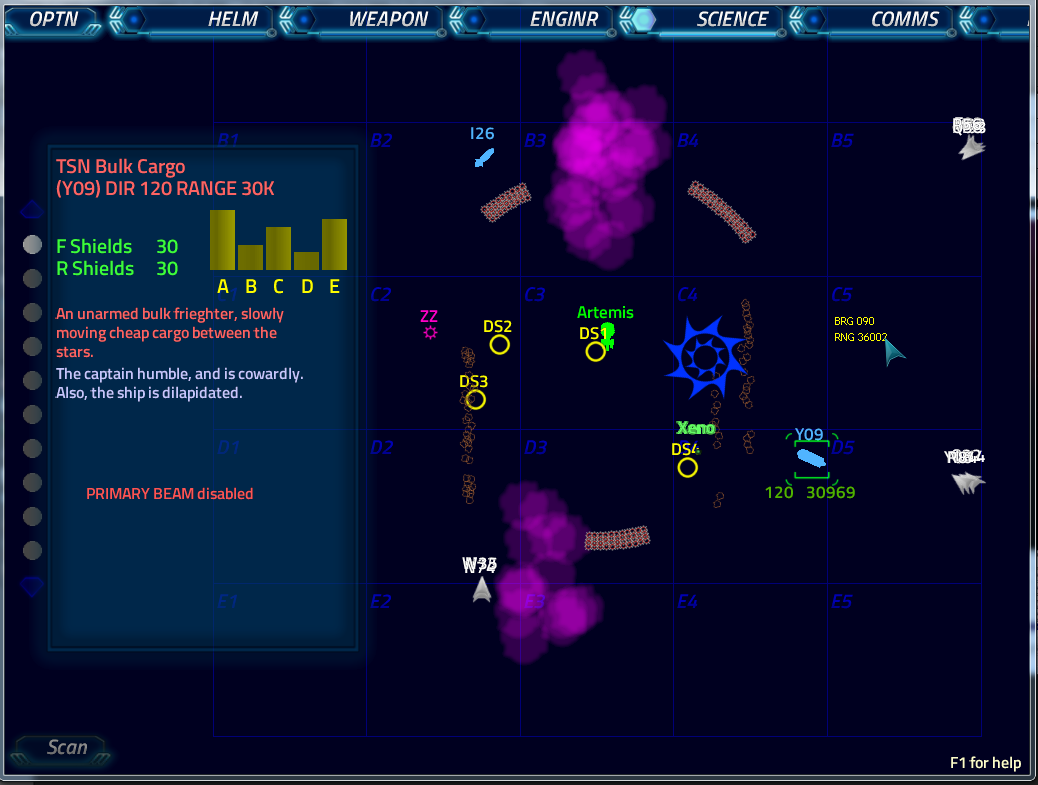The science officer is in charge of intelligence gathering and supplying the captain and crew with the information they need to do their jobs. You'll have the ship's best scanners to use, and you'll be in charge of scanning unknown objects, determining enemy weaknesses and supplying bearing and range information on objectives to the captain. Your scanners are also the only ones capable of seeing into nebulae, so you'll be vital to directing operations there where the rest of the crew are blind.
As the science officer, you need to be pro-actively scanning every enemy (shown in Red) and unknown (shown in White) on your display. To scan something, select it by tapping it on the screen then click the 'Scan' button in the bottom left.

Scanning a vessel once will reveal details of the type of ship, scanning a second time will reveal additional detail including the shield frequencies in use and any useful intelligence on the captain. When attacking a vessel, the weapons officer should tune the primary beams to use the frequency showing the lowest strength on the science console and when attempting to taunt an enemy vessel away from its target, the additional intelligence can help the communications officer pick an appropriate insult!
When something is selected on the science console, you will see the distance (RANGE) and bearing (DIR) to it. The captain will often ask for this information and will relay it to the helm officer in order that they may set a course. For vessels you will also see the shield strengths and it is important that the captain be aware of these before the enemy is engaged. If a fleet is shown on the map, it will be helpful for the captain to know the shield strength and identifier of the largest vessel in the group and to have an idea of the disposition of the rest. In order of difficulty, cruisers are the weakest opponents, battleships in the middle and dreadnoughts the strongest. You may also come across carriers which are able to launch fighters against you.
You have access to the most information on the enemies in the sector, it is your job to sift through it all and communicate only the relevant parts to the captain and other crew members. In combat you should know the shield frequencies, strength and any damage to the target vessel and the next target, which you may be asked to suggest. If you're coming out of combat and are still battle ready, you should know the bearing, range and disposition of the next target or fleet. If you're coming out damaged, you should know the bearing and distance to the nearest space station.
The science officer can also detect anomalies in space, which will show up as small flickering dots on his console. Flying the ship through an anomaly will provide it with a massive energy boost; finding anomalies can extend the number of enemies the ship can engage between visits to stations, helping to finish misions more quickly.

